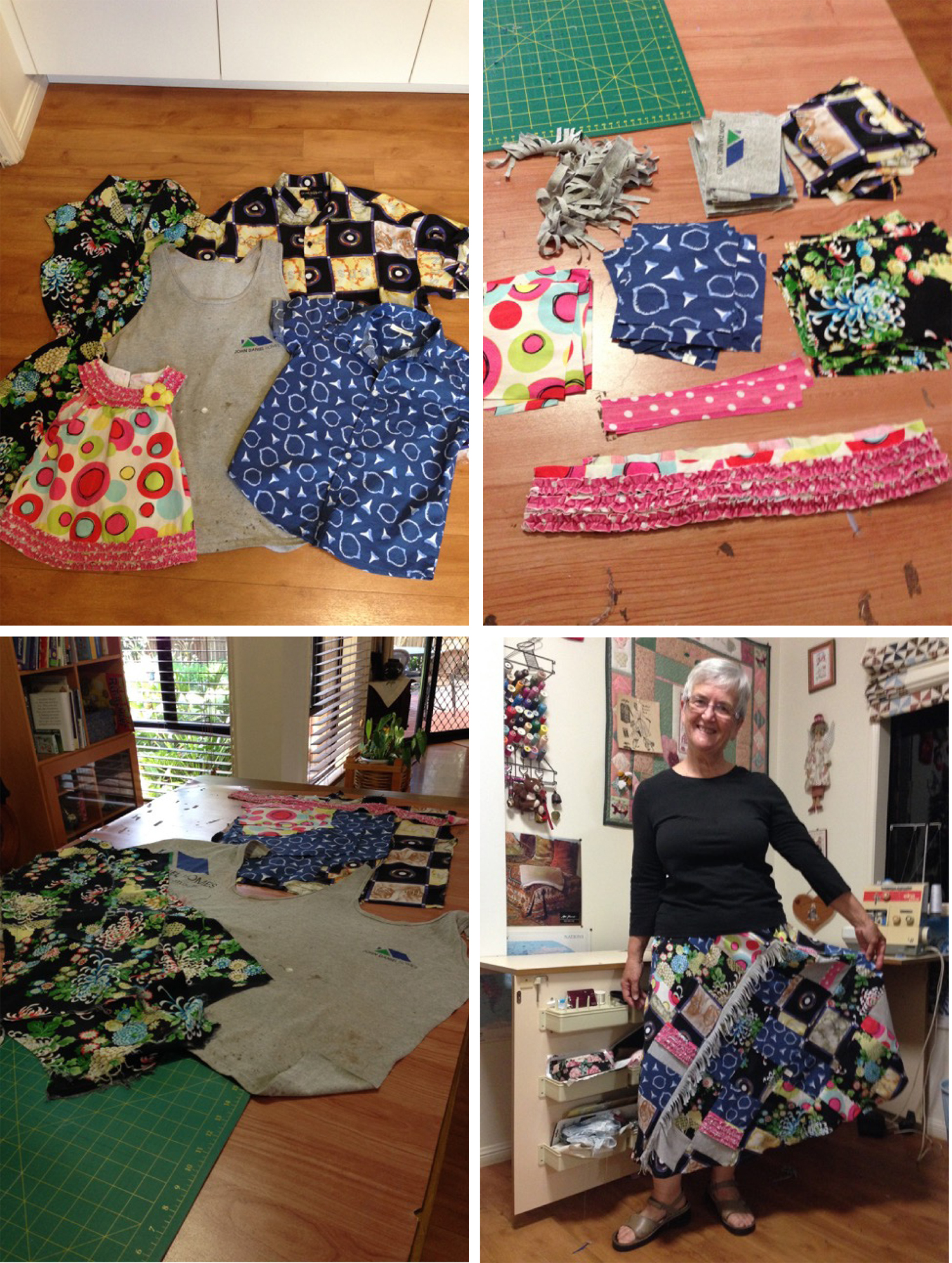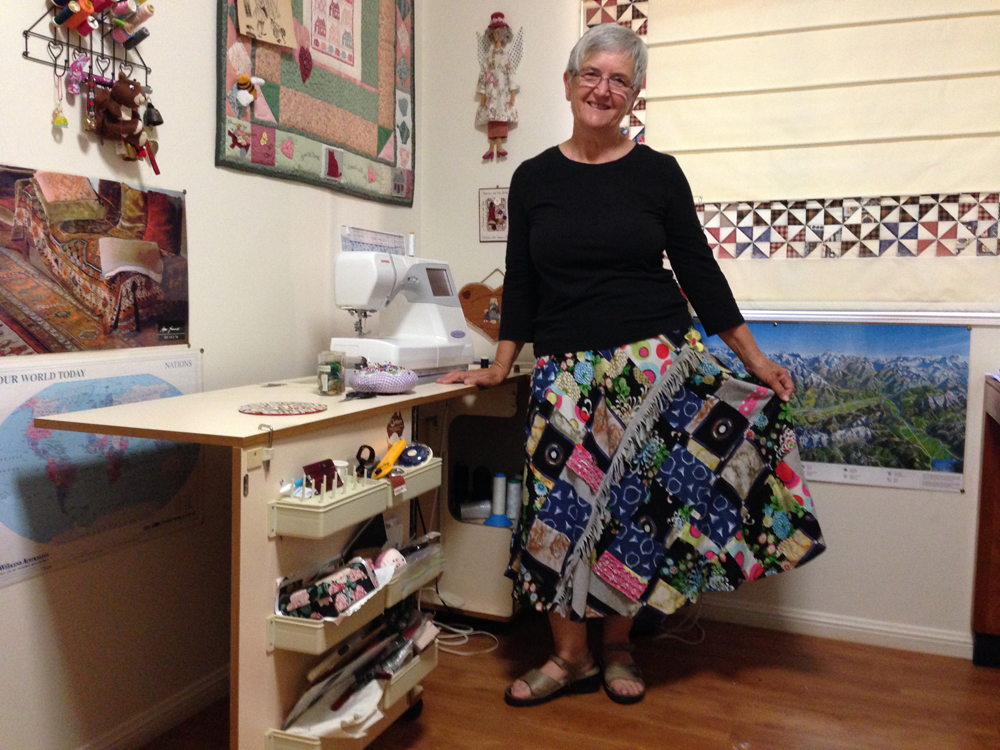Majella Albion taught herself to sew as a teenager because there were no home economics classes at school. She learned by following the directions on patterns. Now Majella’s passion is for patchwork and quilting, which means her clothes’ making is usually limited mending. We’re thrilled she has made an exception for The Slow Clothing Project.
Majella’s choice was to make a skirt, using piecing and patchwork that recycles clothing items contributed by her grandchildren.
“I totally agree with the philosophy espoused by The Slow Clothing Project and am interested in working for a sustainable future for my grandchildren, and encouraging them to develop a more frugal attitude towards their use of material resources. I also enjoy making things and rescuing discarded items and making them into something useful and beautiful,” Majella said.
“As I was a poor student, I used to make all my own clothes when I was at teachers’ college and university. Thanks to mini fashions and my short stature, I could make myself a dress out of one yard of fabric. If only we’d had metric then. Those extra three inches could have added to my modesty!
“When I had small children, I also made all their clothes and even made some of my husband’s clothes as well as my own. As clothes became cheaper, I tended to make only special occasion clothes, such as formal and wedding dresses. I have made some clothes for my grandchildren, but mostly I focus on mending, as the shop bought clothes often don’t survive too long.
I have recovered furniture items, make my own tablecloths, serviettes, and home décor. If I think I can sew, knit, crochet or otherwise make it, I’ll have a go. Only a very small percentage of my current wardrobe is home made although some is certainly recycled.
Majella’s skirt of many colours is comprised from articles of clothing that belonged to her grandchildren but were about to be discarded.
“Emily, 23, gave me a dress that she made when she was in high school;
Joel, 21, provided a shirt that he no longer wears;
Sam, 19, gave me one of his work singlets;
Callum, 7, gave me a shark-patterned shirt that reminded him of his great grandfather and Claire, 5, provided a dress she had long grown out of.”
 “I carefully disassembled the garments to ensure I extracted the maximum amount of usable fabric. I then cut the fabric into pieces of regular width so I could make strips and then joined those to match pattern pieces for a skirt. The singlet fabric was the most challenging to incorporate, so I cut a strip of that to make a decorative fringe. Other pieces, I adorned with scraps of decoration from Claire’s dress.
“I carefully disassembled the garments to ensure I extracted the maximum amount of usable fabric. I then cut the fabric into pieces of regular width so I could make strips and then joined those to match pattern pieces for a skirt. The singlet fabric was the most challenging to incorporate, so I cut a strip of that to make a decorative fringe. Other pieces, I adorned with scraps of decoration from Claire’s dress.
“The pattern I used was one I have had for at least 30 years. I remember I had a lovely natural-coloured skirt which was a great basic piece for my wardrobe way back then. Having rediscovered the pattern, I’m inspired to make myself another skirt from it.’
When we asked Majella, who lives at Toowoomba in Queensland Australia, how the concept of slow living plays out in her life, she said: “Anyone who knows me will be surprised and amused that I would dare to use the word slow to describe myself. I tend to like to get things done as quickly and efficiently as possible (I completed this project in a single day. The slow part was getting the garments.). However, my slowness comes from being slow to waste energy and resources. I try to consciously act to conserve our scarce resources and to recycle and reuse wherever possible. I love the fact that my favourite hobby, patchwork, is a sustainable activity as I can continue to use discarded scraps to create things of beauty and purpose.”
Go Majella, thanks for inspiring us to do more with less!
